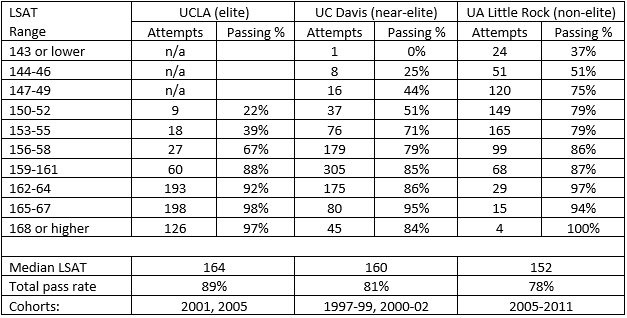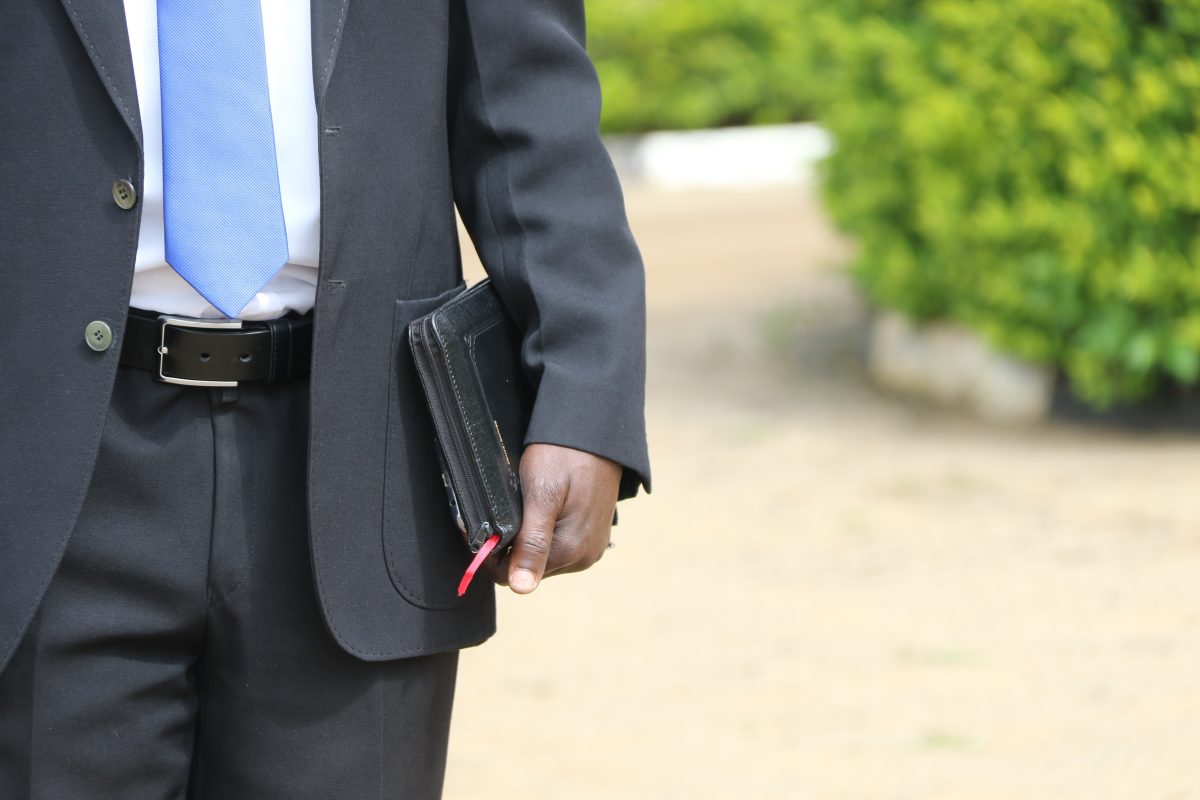Eighteen years ago, I published an article in the Stanford Law Review which documented for the first time the enormous breadth and scale of race-based admissions preferences in law schools. At most law schools, the undergraduate grades (UGPA) and median LSAT scores of enrolled Black students were two standard deviations below those of white students at the same school. Outside of a handful of “Historically Black” institutions (where racial preferences were minimal), Blacks in law school were not faring well. They were failing out of school at more than twice the white rate; half of those who did graduate had grades in the bottom 10th of their class; and Blacks were six times as likely as whites to take the bar exam multiple times but never pass.
Eliminating preferences would actually increase the number of Black lawyers.I argued that the preferences system was utterly perverse. What was meant as a helping hand was instead placing students in schools where they were not academically prepared to succeed. My article laid out considerable evidence that, when one controlled for the effect of preferences, Blacks and whites earned similar grades and graduated and passed the bar at the same rate. The use of massive preferences was depressing Black outcomes so much that eliminating preferences would actually increase the number of Black lawyers.
Most law-review articles languish in obscurity or are read by only a handful of specialists, but my Stanford piece was downloaded some 60,000 times in the two months after it appeared. Although other scholars had already published excellent work on “mismatch” effects at the undergraduate level, my article on “law-school” mismatch was the first to attract not only a wide readership but national media attention. It also spawned dozens of critiques, some by very prominent scholars. Many pointed out, correctly, that the evidence for law-school mismatch was circumstantial; the only large data source on law-school outcomes aggregated students across schools, so one could not directly measure an individual student’s “credentials” deficit, nor observe just what outcome he or she would have had at a less competitive school.
I agreed that better data were desirable and urged schools to make disclosures that would facilitate research while protecting student privacy. I was joined in this call by the U.S. Commission on Civil Rights and by at least one courageous critic, Vik Amar, who later became dean of the University of Illinois School of Law. But the vast majority of the legal-education establishment tenaciously fought the release of these data. A number of attorneys helped me to bring suit against the State Bar of California and other institutions, but we had, at best, very partial success. Indeed, I found that even as evidence of a mismatch effect mounted, law schools and licensing organizations became more determined to keep the data secret.
I did have some successes, however. Robert Steinbuch (a colleague at the University of Arkansas, Little Rock) and I eventually secured the public release of data from 12 cohorts of law students at four law schools, covering about 6,500 students in all. And after a multi-year review process, the Journal of Legal Education—the official organ of the Association of American Law Schools—has now agreed to publish the first set of our results in its next issue.
Our findings indicate that mismatch can account for two-thirds to three-quarters of the Black-white gap.Our findings are even stronger than we expected. A student’s degree of mismatch in law school is by far the strongest predictor of whether he or she will pass a bar exam on a first attempt. In 2005, I estimated that mismatch could account for half of the bar-passage gap between Blacks and whites, with the rest caused by lower average pre-law-school preparation levels among Black students. Our findings indicate, however, that mismatch can account for two-thirds to three-quarters of the Black-white gap, as well as more than half of the Hispanic-white gap. Importantly, we found that when one fully controls for mismatch, LSAT, and UGPA, race-specific effects completely disappear. Many critics of mismatch had argued, without evidence, that poor minority performance might be caused by “hostile” environments in law school or “stereotype threats” faced by underrepresented students. Our results flatly contradict such claims.
Most of our results are in regression analyses that can be hard for those without a technical background to interpret. But one of our tables, reproduced below, makes the basic pattern clear. It shows first-time bar-passage rates for several thousand law graduates, grouped by their LSAT score and whether they attended an elite, somewhat-elite, or non-elite law school. Unsurprisingly, students with high LSAT scores had high bar-passage rates at all schools and did particularly well at the elite school in question. But students at the elite school with LSAT scores 12 to 14 points below the median of their fellow students (i.e., LSAT scores of 150-152) had only a 22 percent first-time bar-passage rate, while students with the same LSAT score at the non-elite school in question had a 79 percent first-time bar-passage rate. In other words, lower mismatch translates into dramatically better performance.

2023 is an important time to get across this message. The Supreme Court is preparing to issue opinions in cases brought by Students for Fair Admissions against Harvard and the University of North Carolina. Most observers expect the Court to significantly restrict the legal scope of racial preferences. If it does, universities may dramatically reduce the size of current preferences. But they may, instead, deemphasize traditional measures of academic ability (like the LSAT) in favor of highly subjective factors (like essays) that allow them to continue to use preferences under the radar. Or they may simply ignore the Court, as many law schools have ignored state-level bans on racial preferences. What we can be sure of is that university leaders will be talking with one another and with their admissions officers. A clear showing of the enormous harm done by large preferences could help steer them to the straight and narrow.
Richard Sander is an economist and law professor at UCLA, where he has taught since 1989.

